Action with non-action cameras
The last blog post contained some shots of parkour taken with the M8, to show that while some cameras would seem unsuitable for some uses, you can do it if you're creative enough. I recently saw a set of skateboarding images shot with an M9, so others would seem to think the same way.
Now that the M8 is my main camera, I figure that action shot opportunities will fling themselves at me out of ironic spite. Lo and behold, there was another parkour meeting today. I figured I'd challenge myself to shoot it with not only the not-really-an-action-camera M8, but the even-less-an-action-camera Digilux 2. If you don't read this blog regularly, then a) why not? :-) and b) The Digilux 2 is a nearly-ten-year-old digital camera with 5 megapixels (not really a problem for small web pictures), autofocus which is as slow as the D3S was fast (this IS a problem for action), a viewfinder which renders the world in black, blue and white (and makes it quite often literally impossible to see what you're looking at), and if you really want to get the best out of it you have to shoot it in RAW and no higher than its base ISO of 100.
(Slightly off topic, but speaking of quirky cameras, I've been fighting the urge to buy a Sigma DP Merrill, either version 1 or 2 (3 is out as well now) because the sample images I've seen which play to the camera's strengths are simply mindblowing. I've never seen anything like it, and to consider that it comes from a point and shoot which sells for 90,000 yen is just crazy. I might have to pick one up just to see if the hype is worth it).
Anyway. Parkour with two slow cameras.
Digilux 2 first. The trick with this is to lock autofocus on where you think / know the action's going to happen, and then it's all about timing. The zoom range is great for mixing up wide-angle and mild telephoto.
Learning to roll
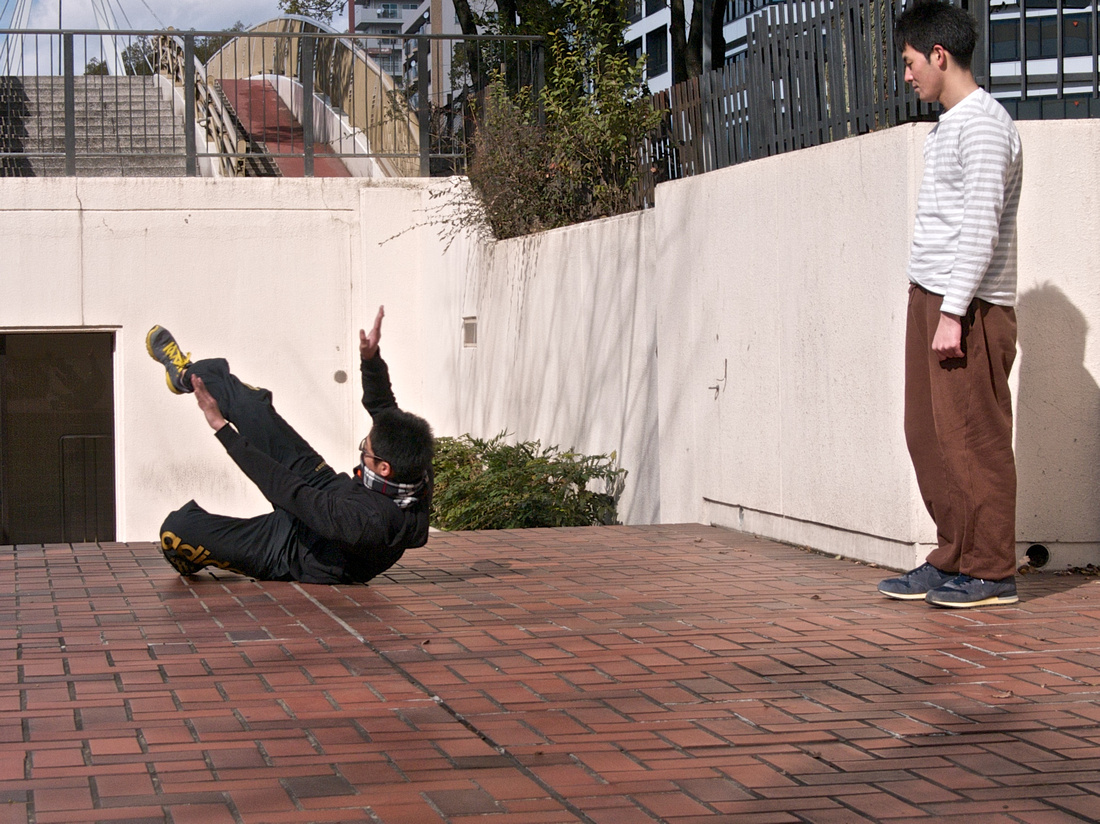

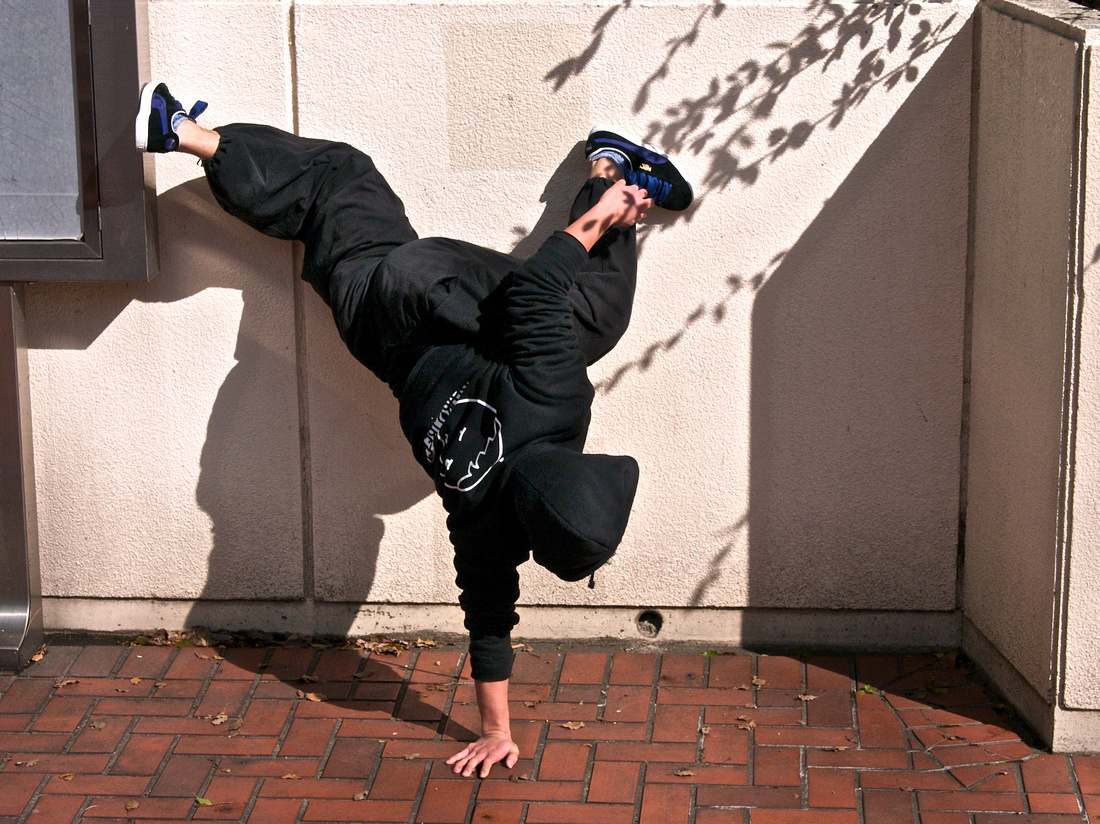

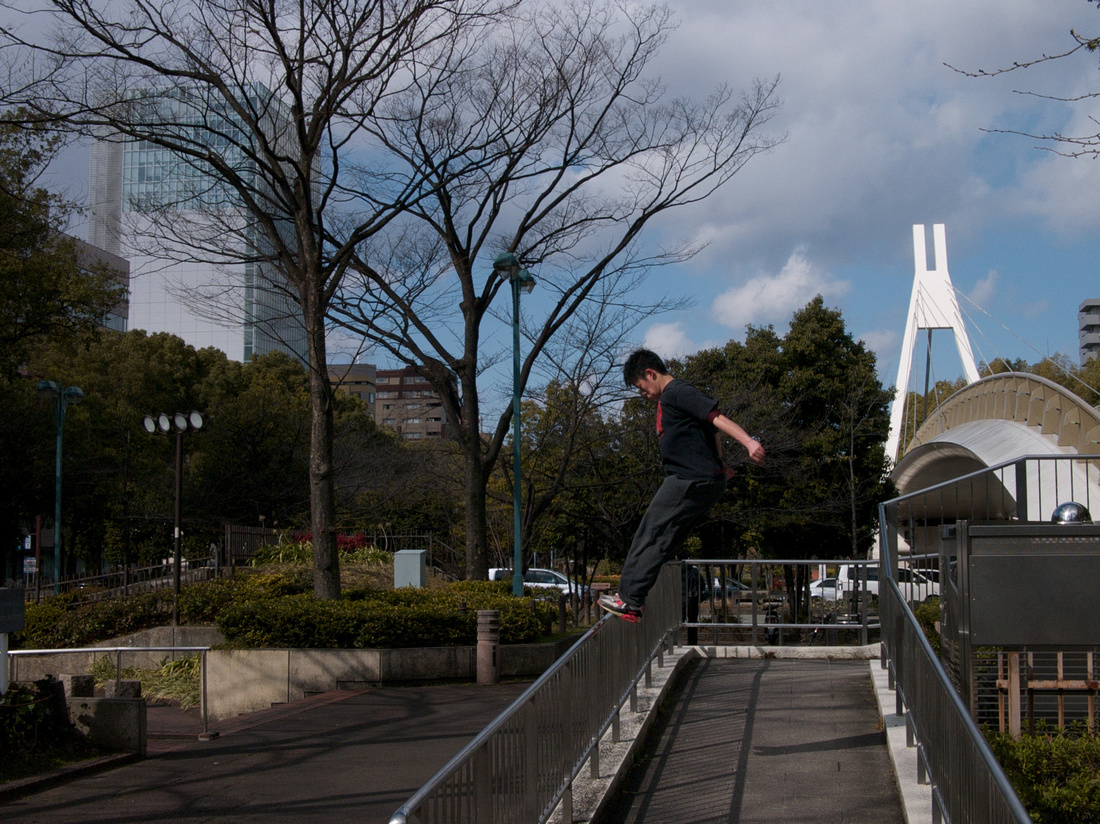

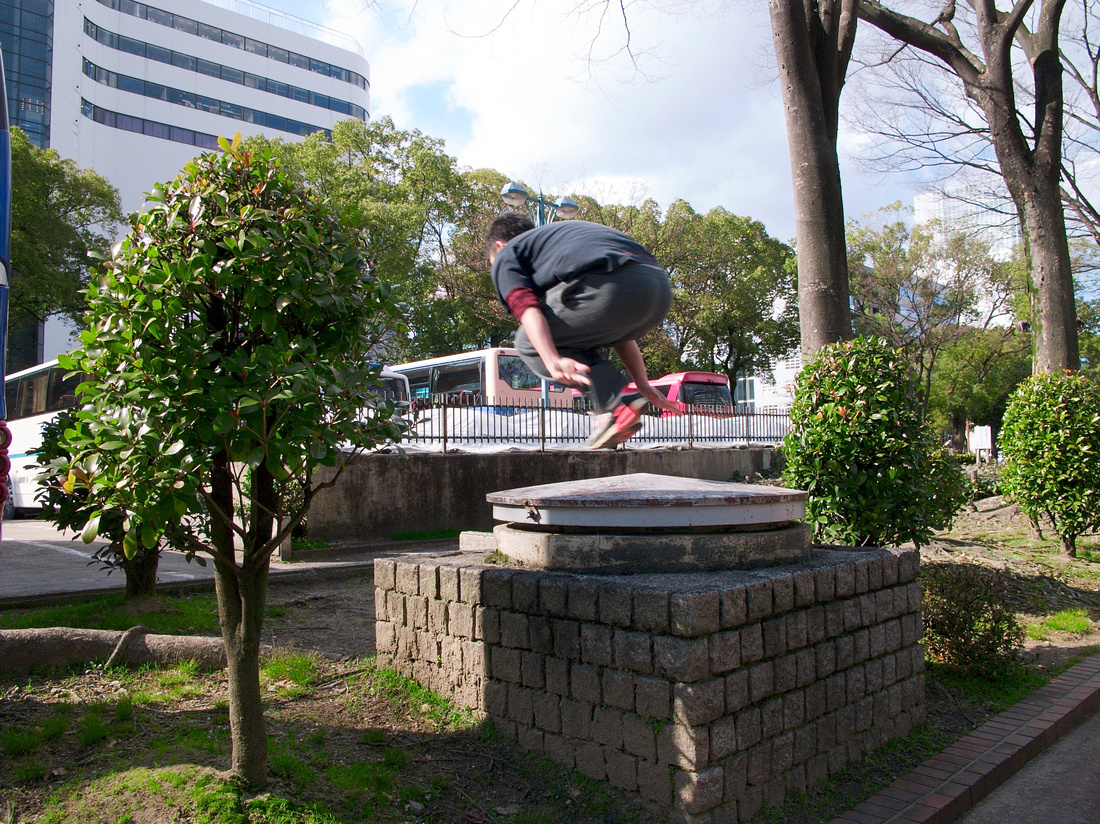

I don't know if handstands on a skateboard is technically parkour, but it's pretty cool anyway. The skateboard, by the way, was moving at the time.
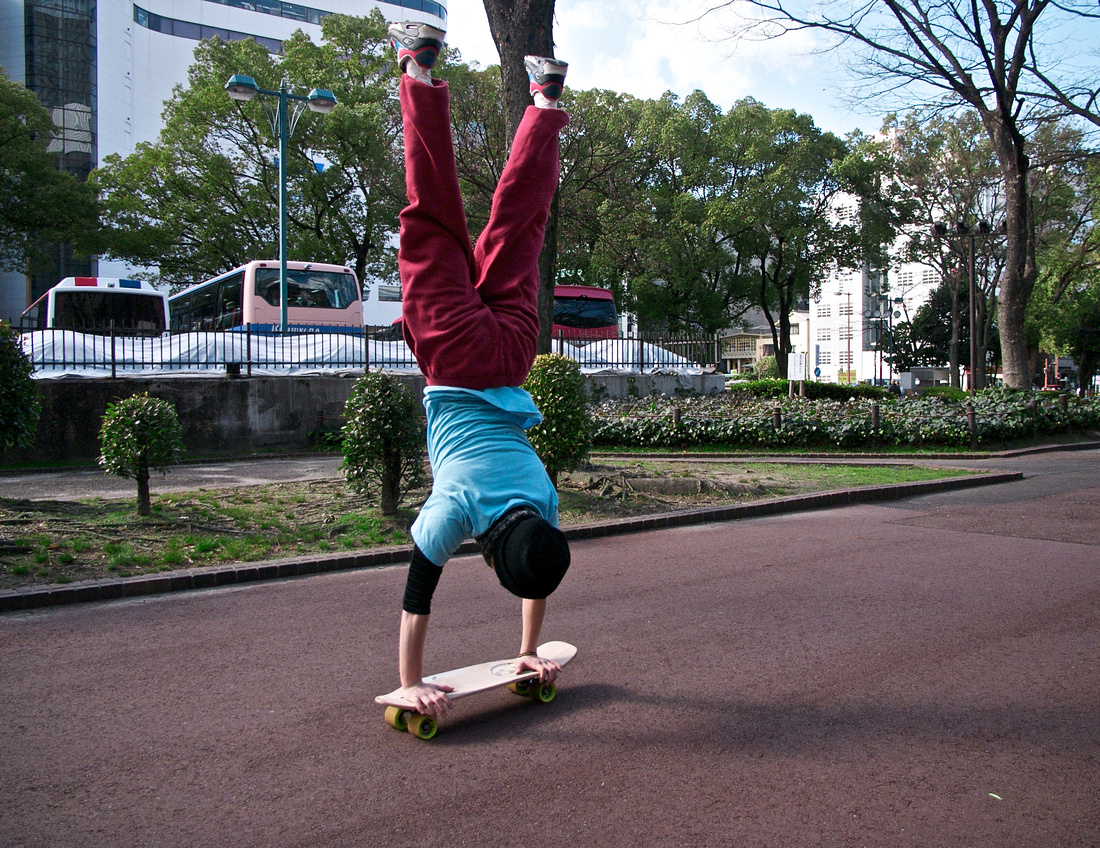

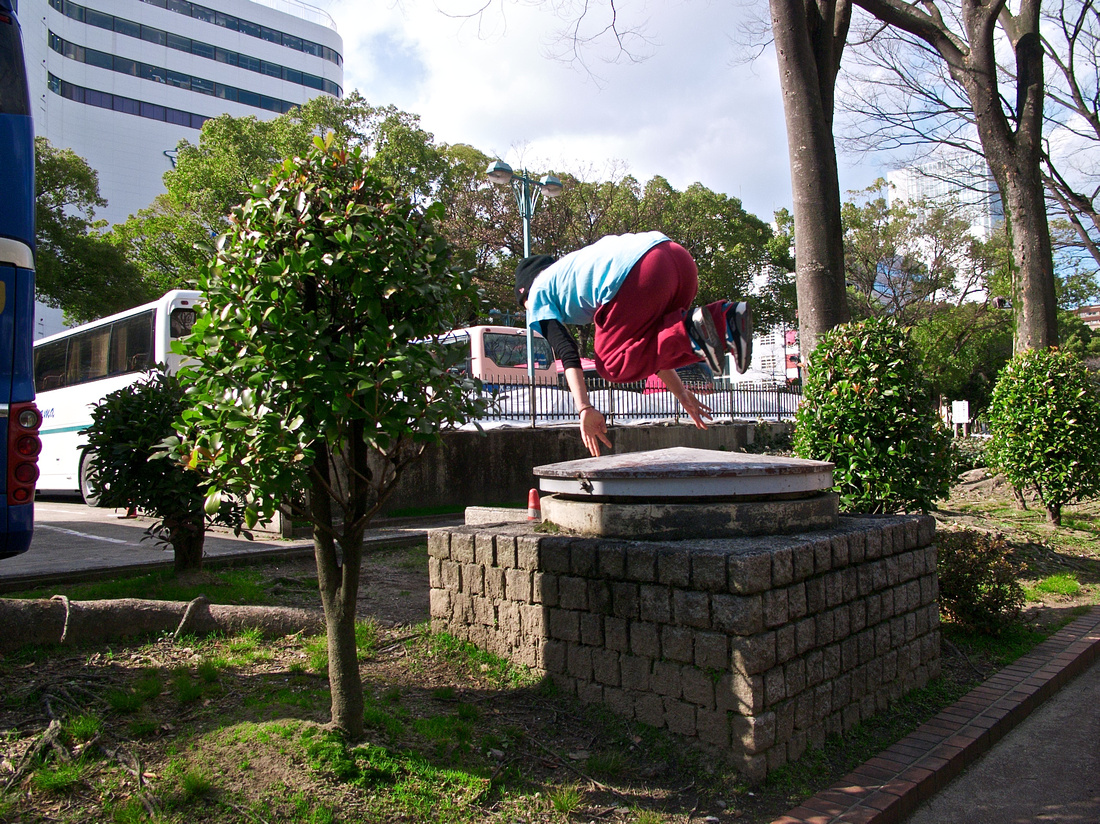

I'd be lying if I said I was aiming for this exact moment, but using what are essentially one-shot cameras (both have burst modes, but neither are worth using) does improve your sense of timing. It's pretty satisfying when you get it just right.
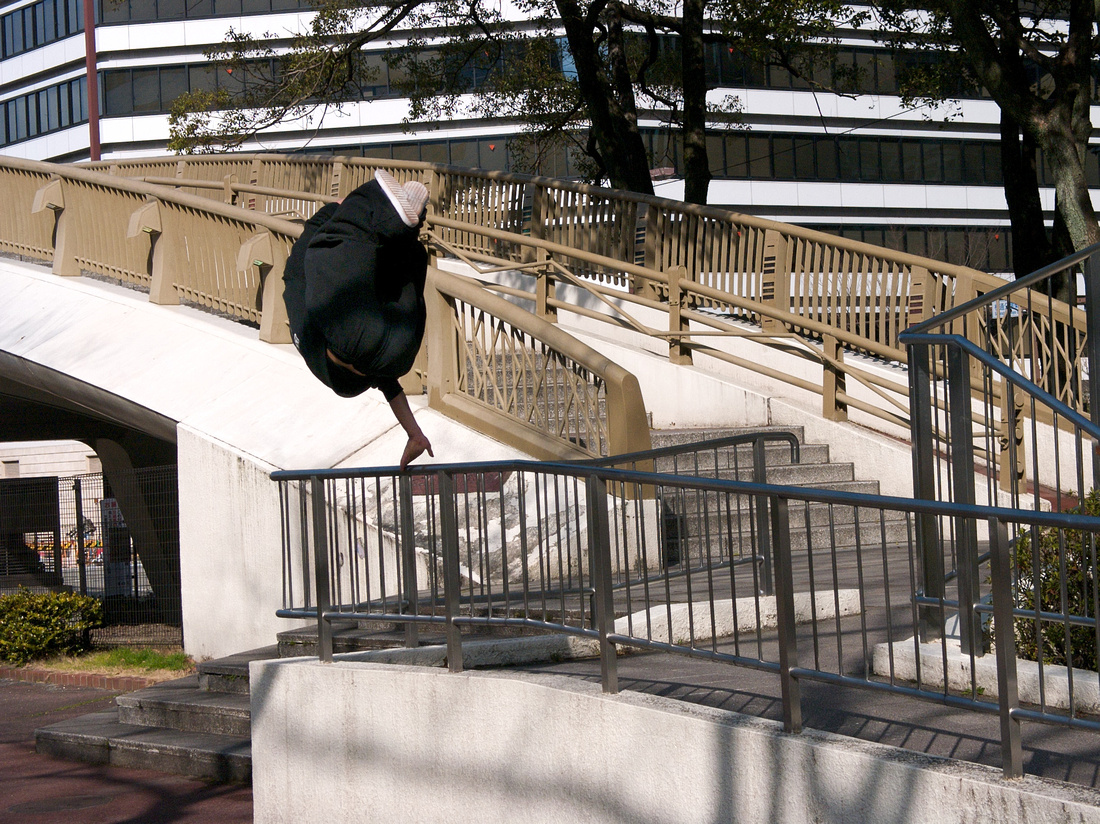

In close with the wide-angle setting
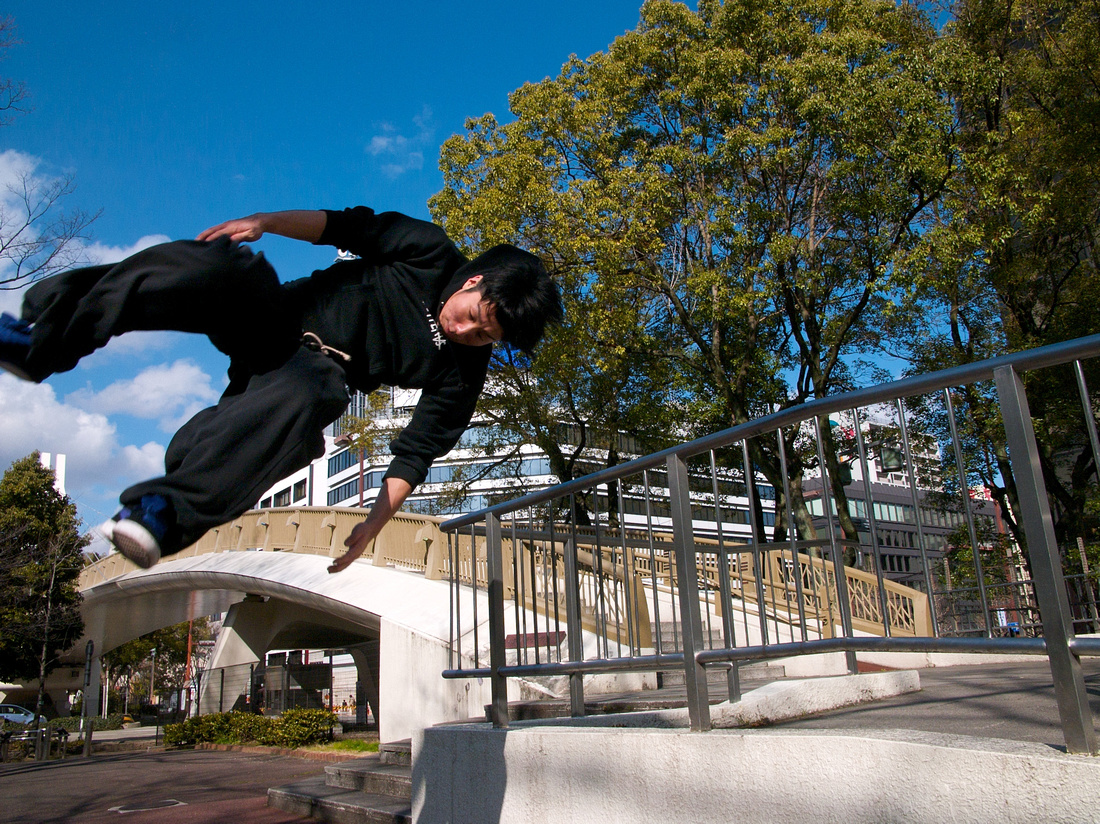



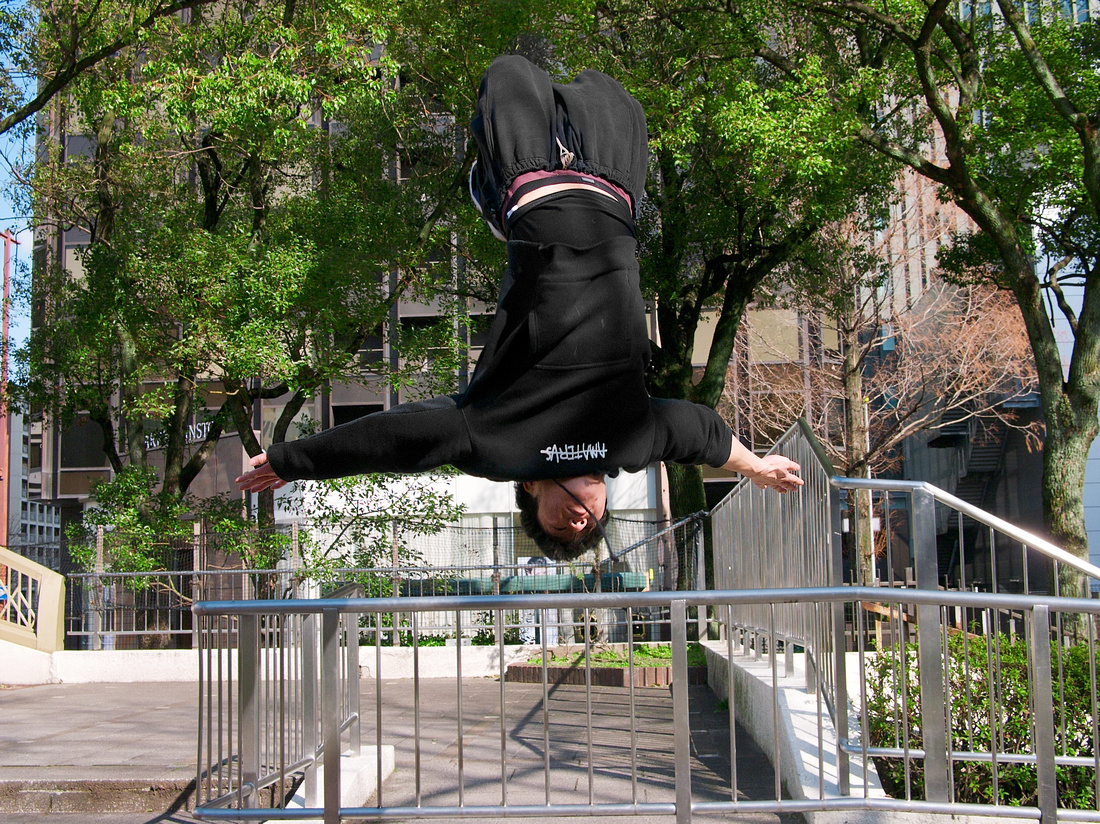

I always use aperture priority on the Digilux 2, i.e. I let the camera choose the shutter speed, and given that I'm essentially limited to ISO 100, it's not always a very high speed. Sometimes it works out to the advantage of the picture; this one has just the right amount of blur to suggest motion. Happy accident.
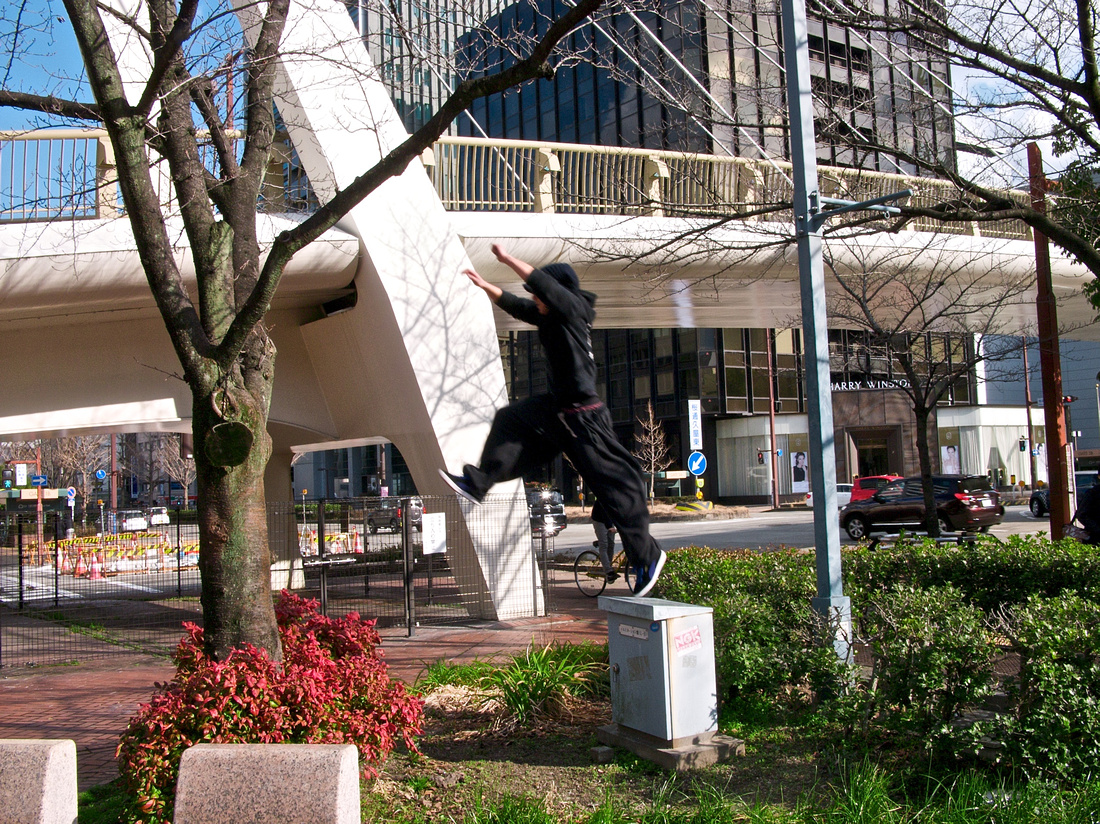

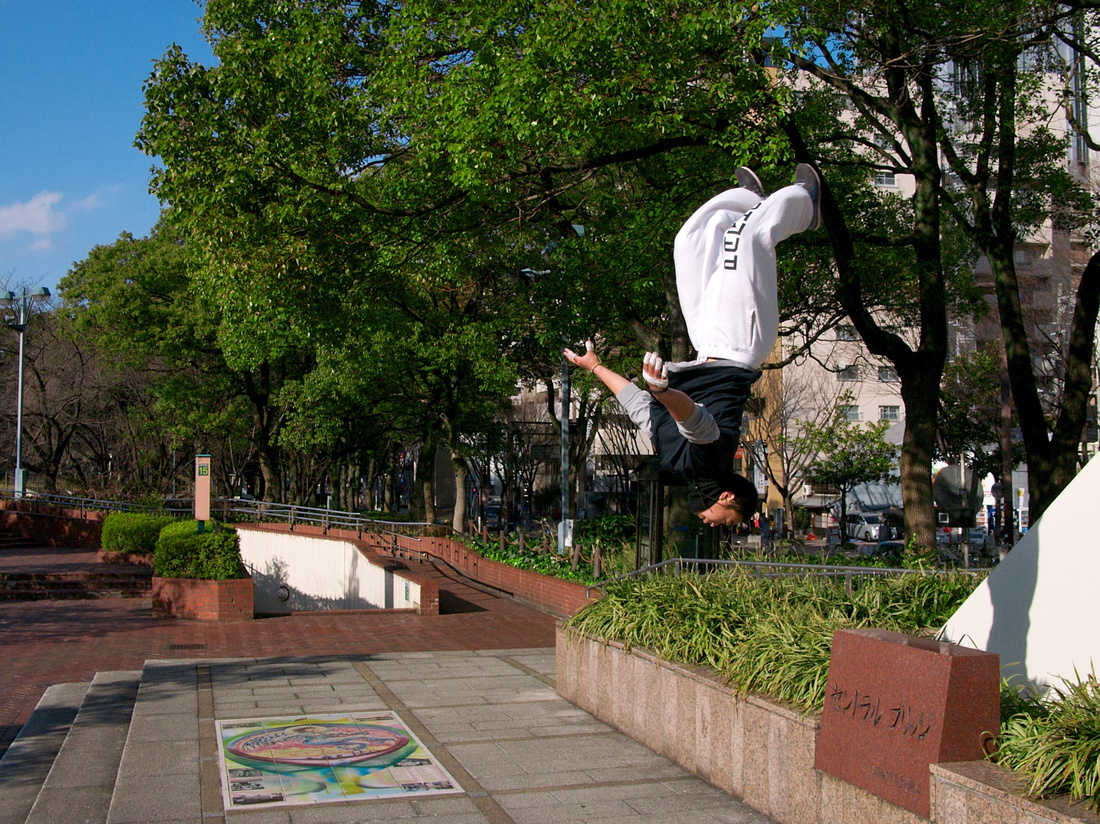

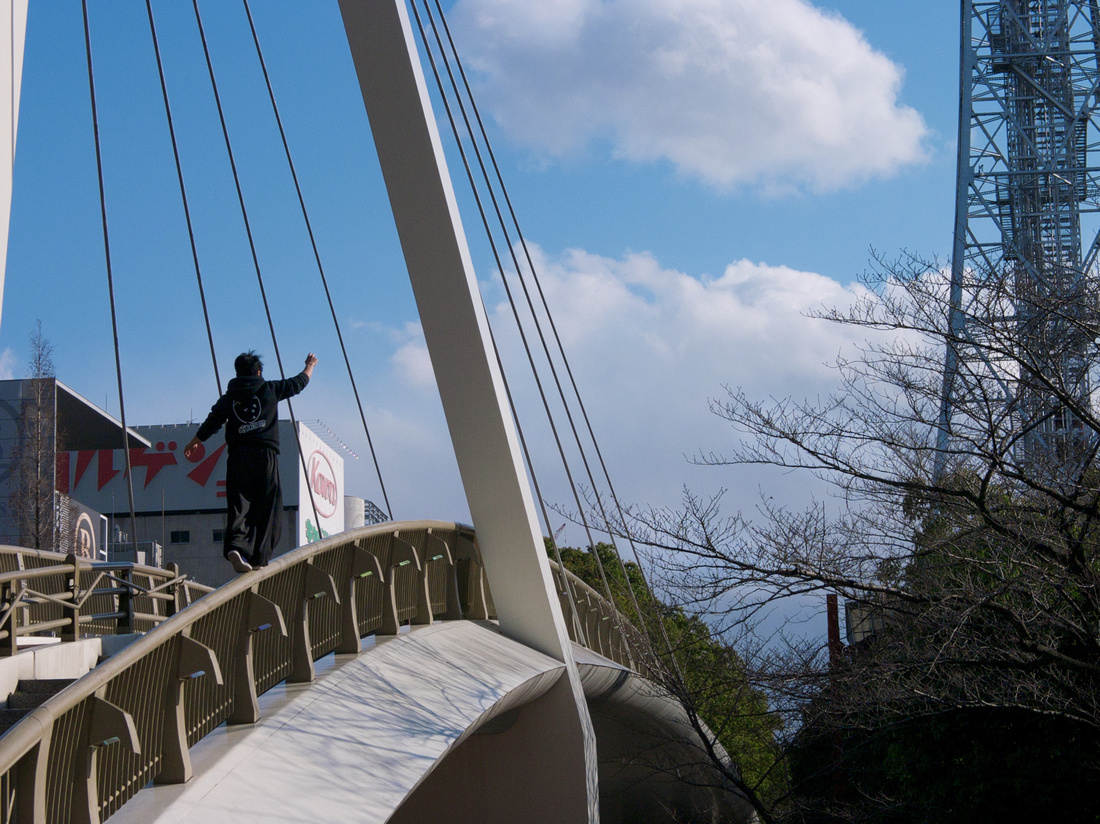

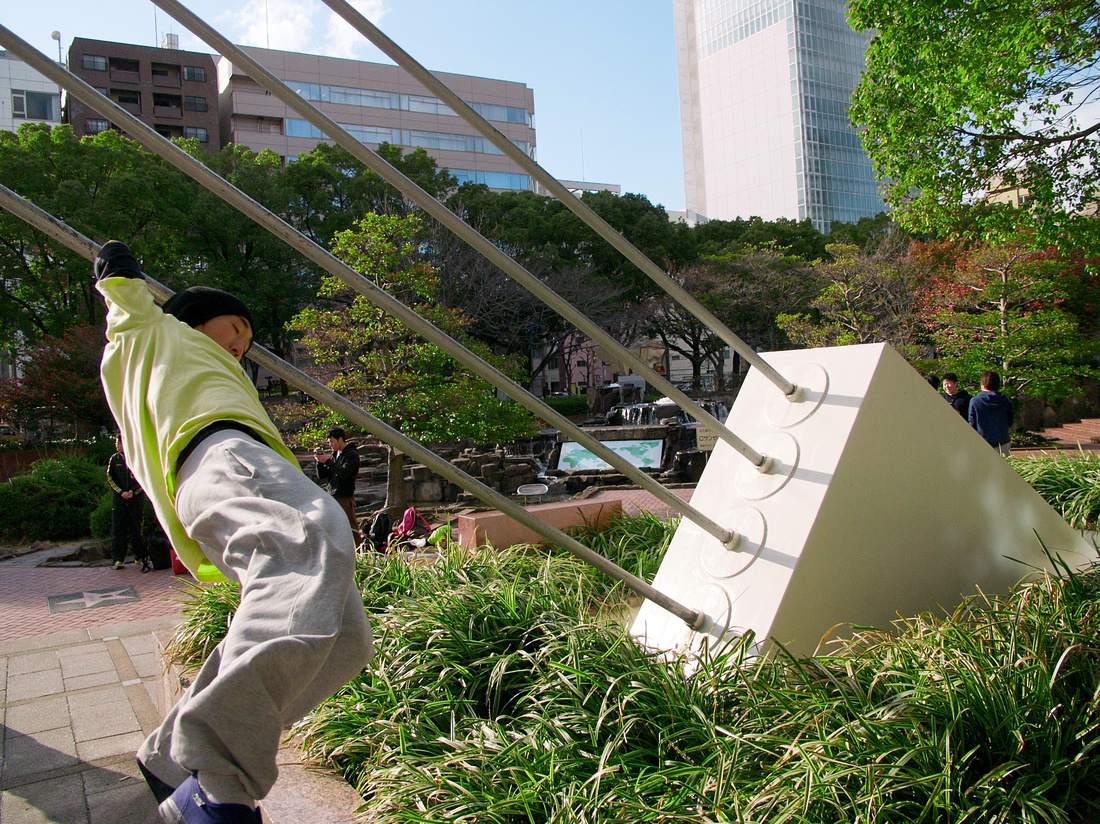

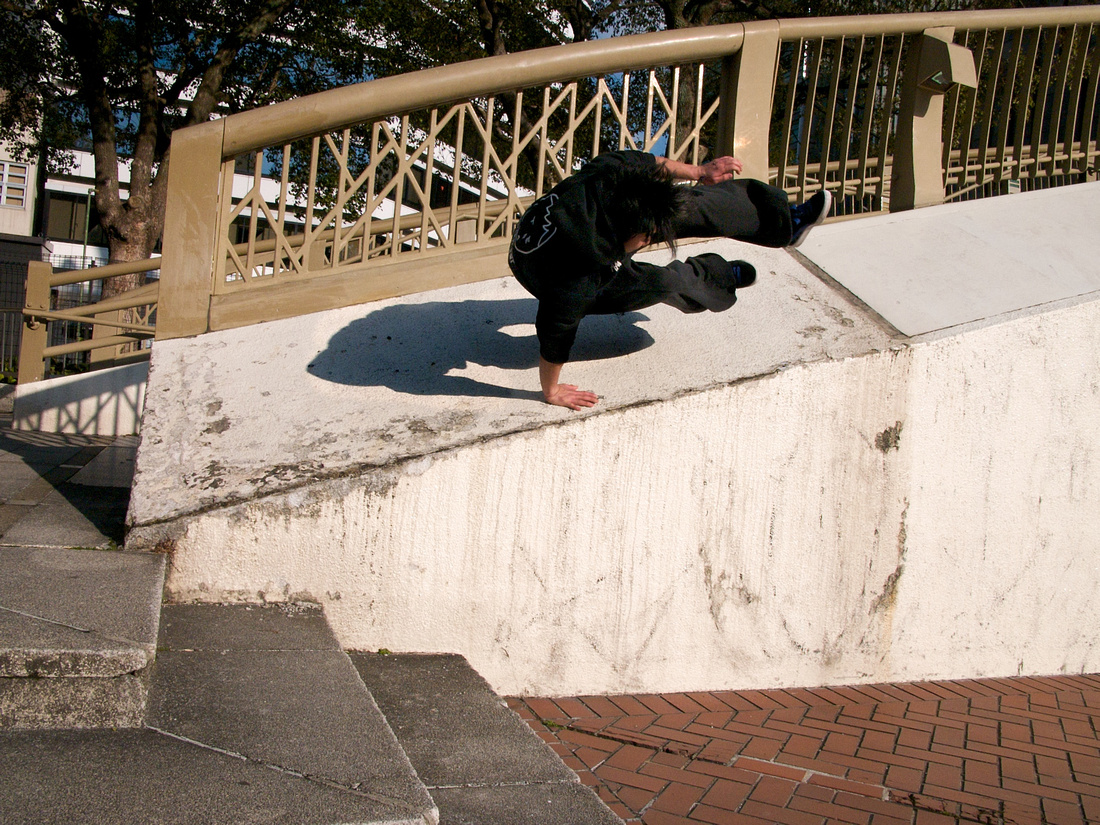

Not being a parkour person myself (as fun as it looks, I don't think I could do it now; maybe fifteen years ago!), I don't know what the most important attribute is, but "balance" has to be pretty high on the list.
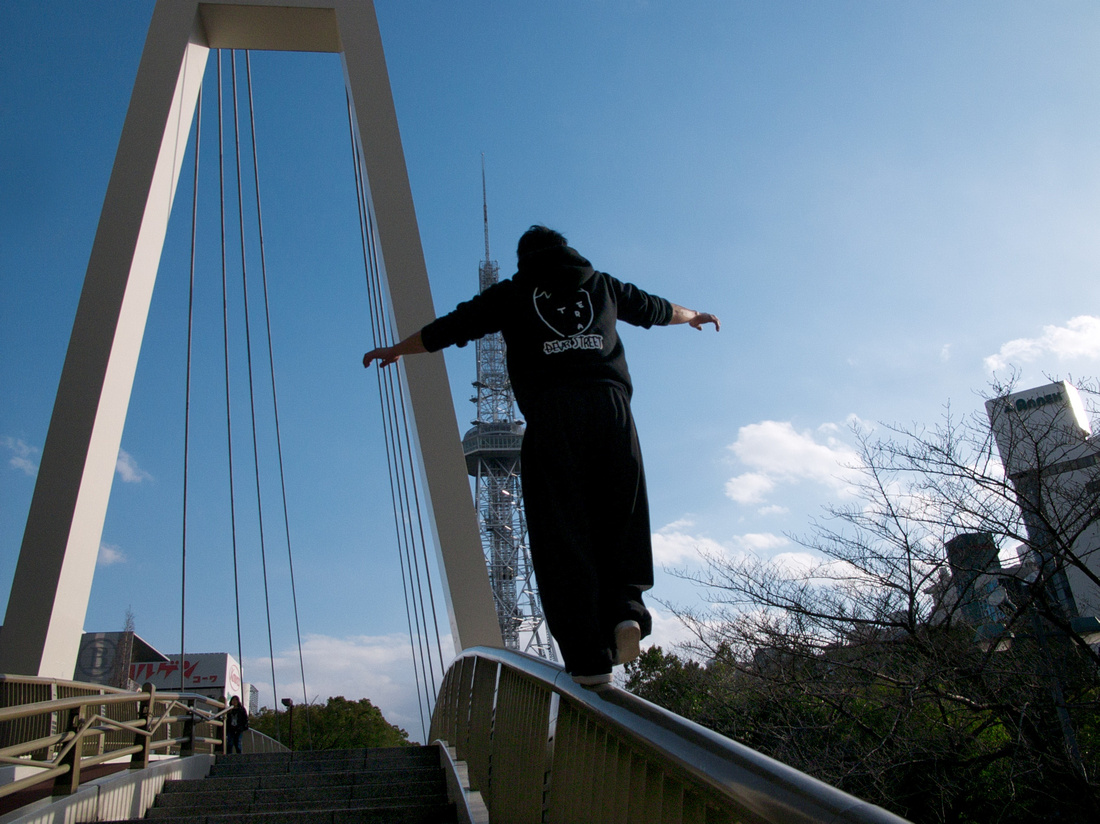

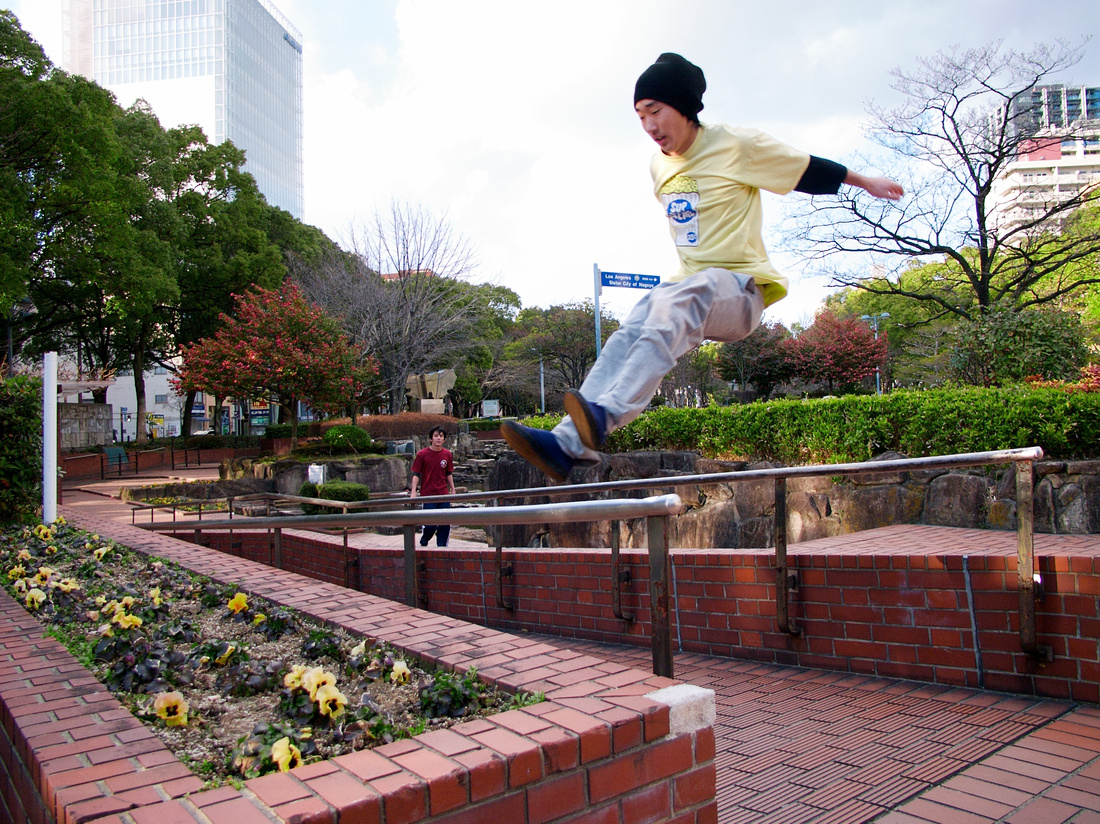

Now for the M8. This is a rangefinder, of course, so it does have certain characteristics which are useful when shooting parkour, especially seeing what's going on outside the framelines. Focus is easy to set and as long as you have enough DOF to cover minor errors in focusing, then you're good to go. (That being said, when you try and shoot it wide open and miss, it's annoying, but when you land one it's really something special)
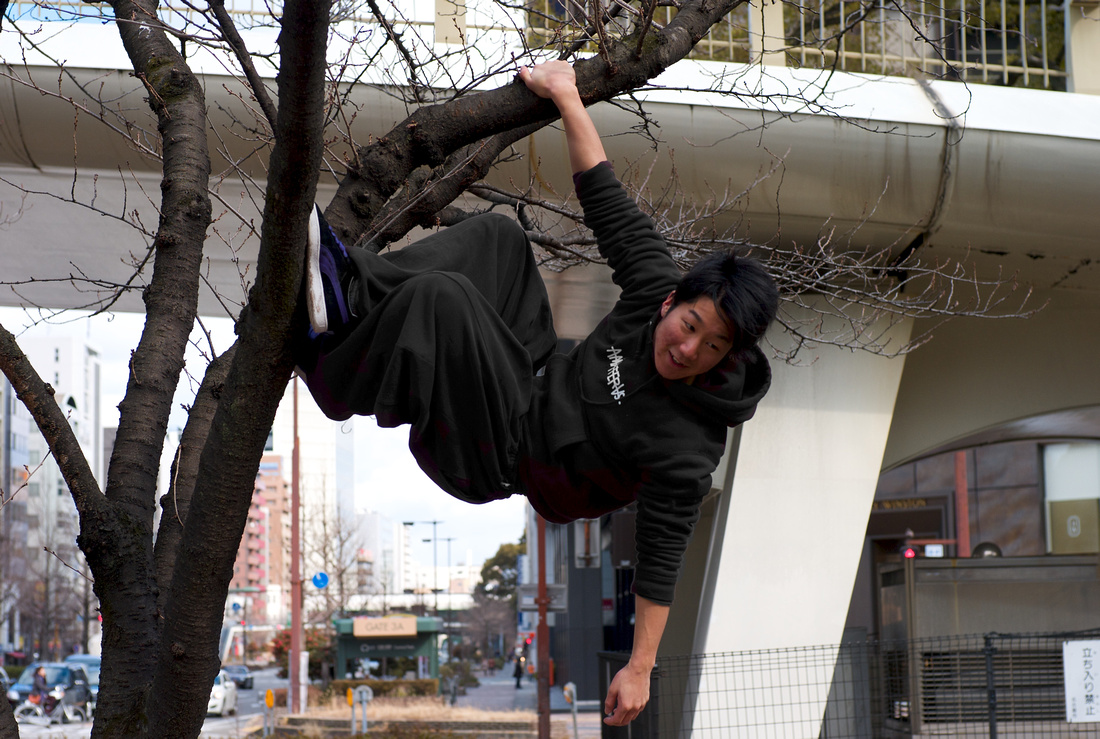

The larger sensor of the M8 gives a better separation of subject and background
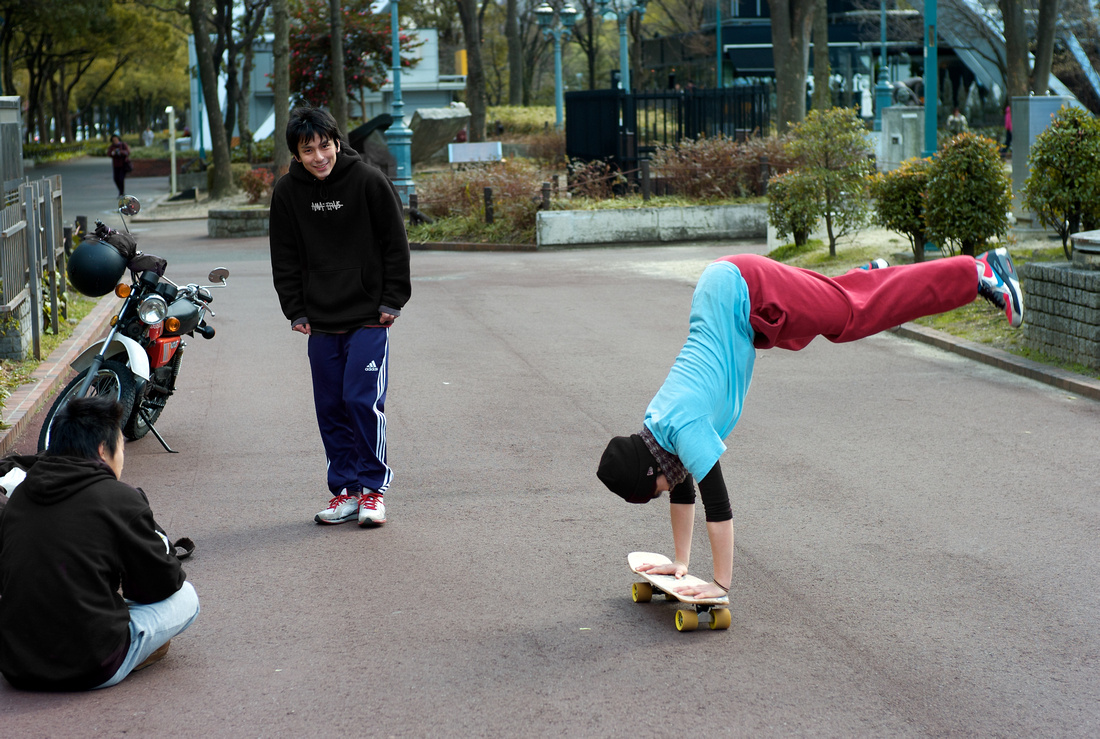

More handstands from a different angle
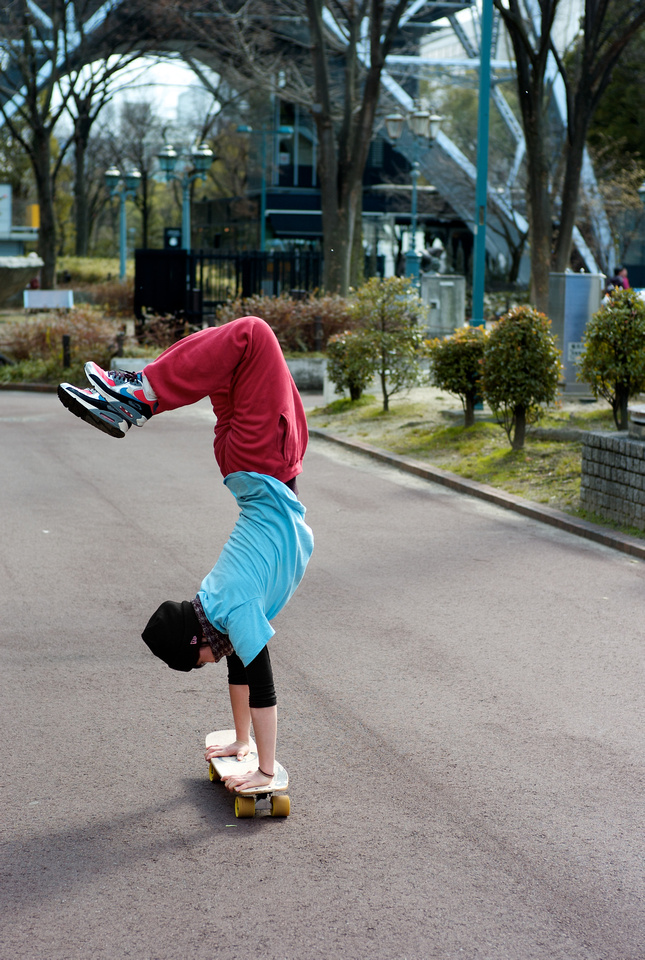



Very similar to the Digilux 2 shot above
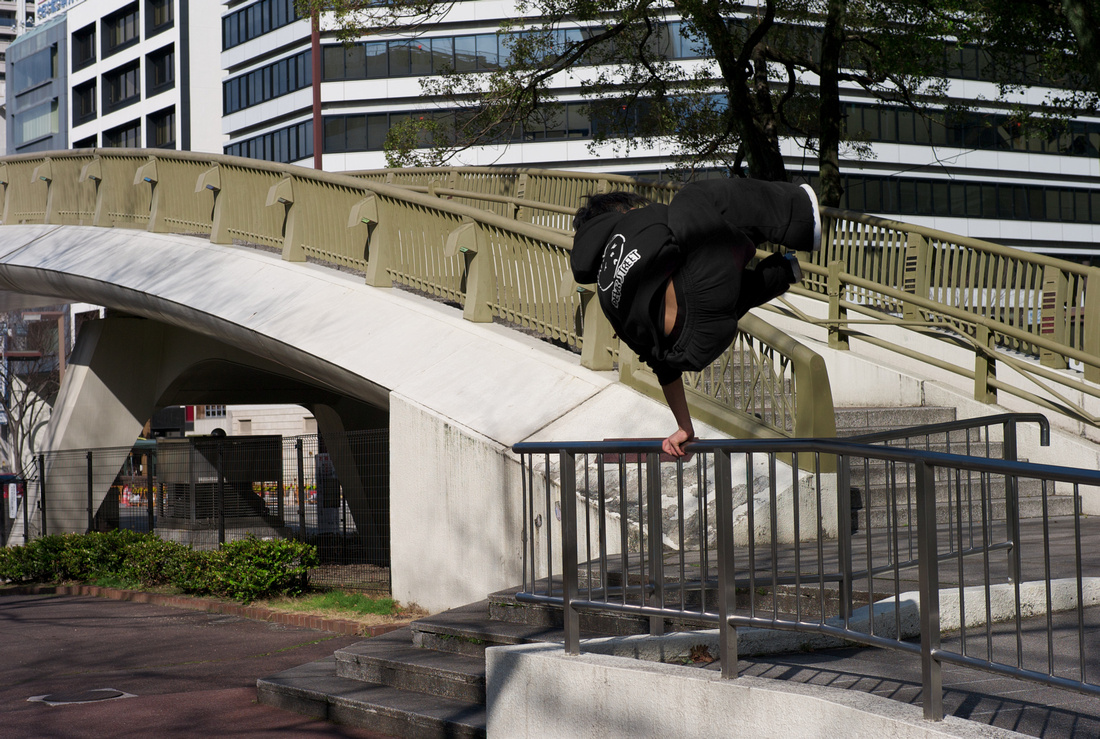

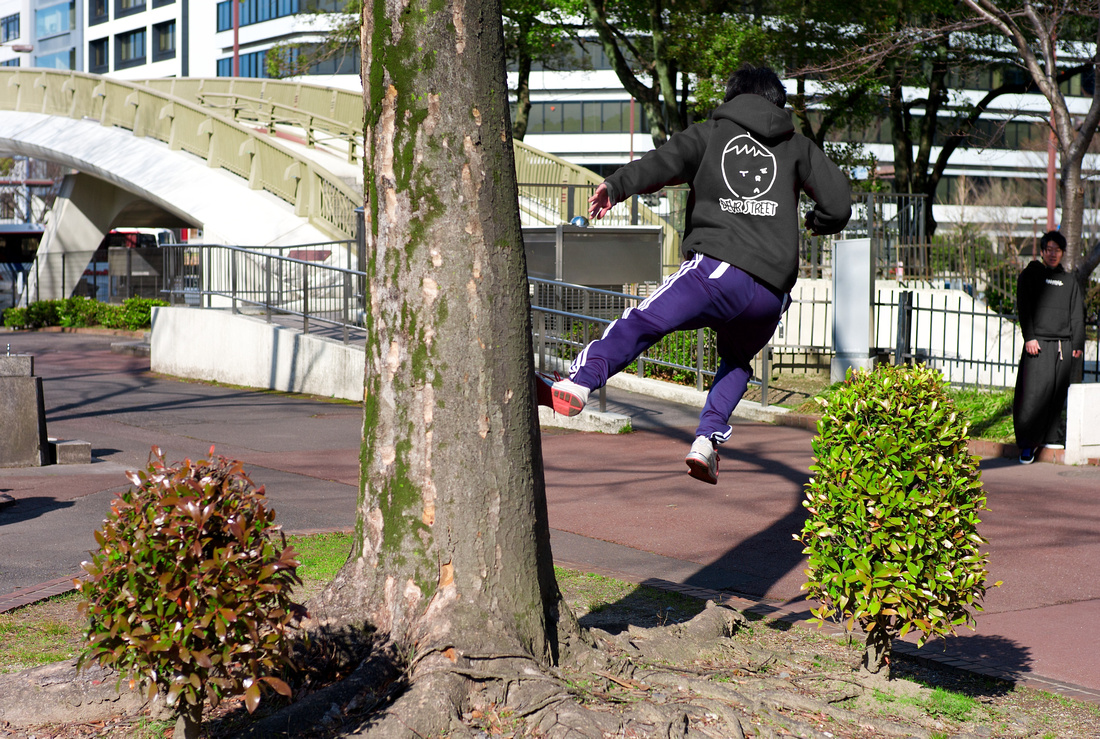

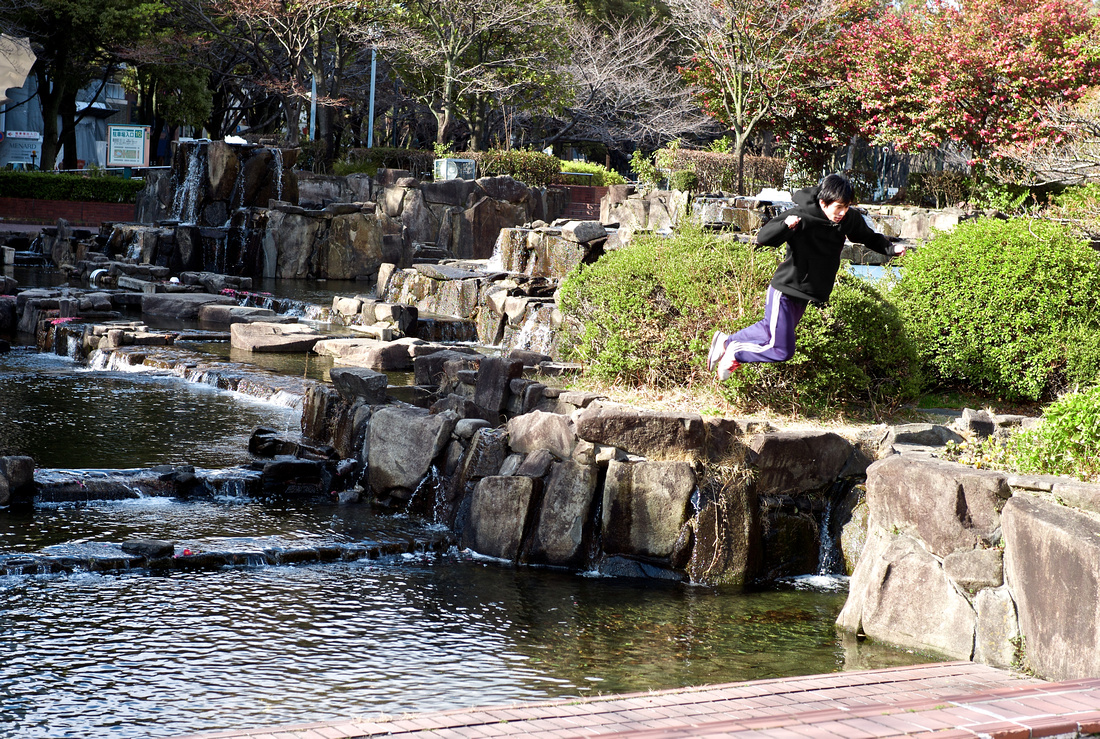

One disadvantage of not having a decent burst mode is this kind of scene, where four of them run and jump in a staggered order. I have one chance to get a shot so I have to decide pretty much in that instant if it's worth taking or not.
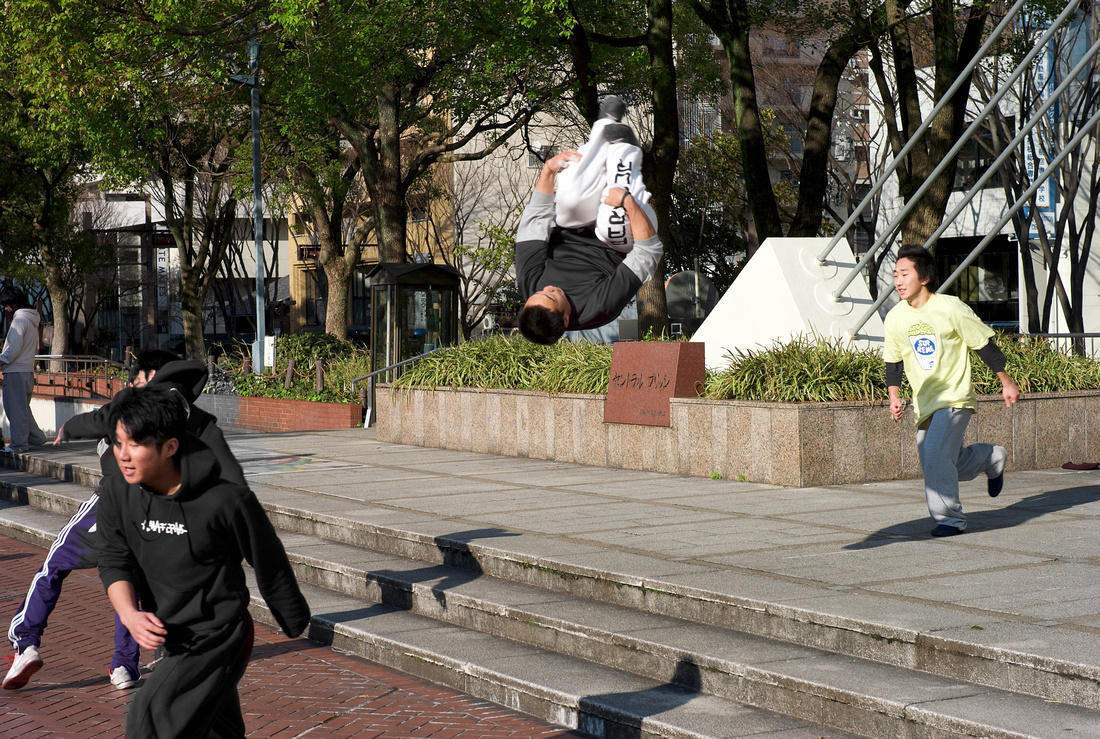

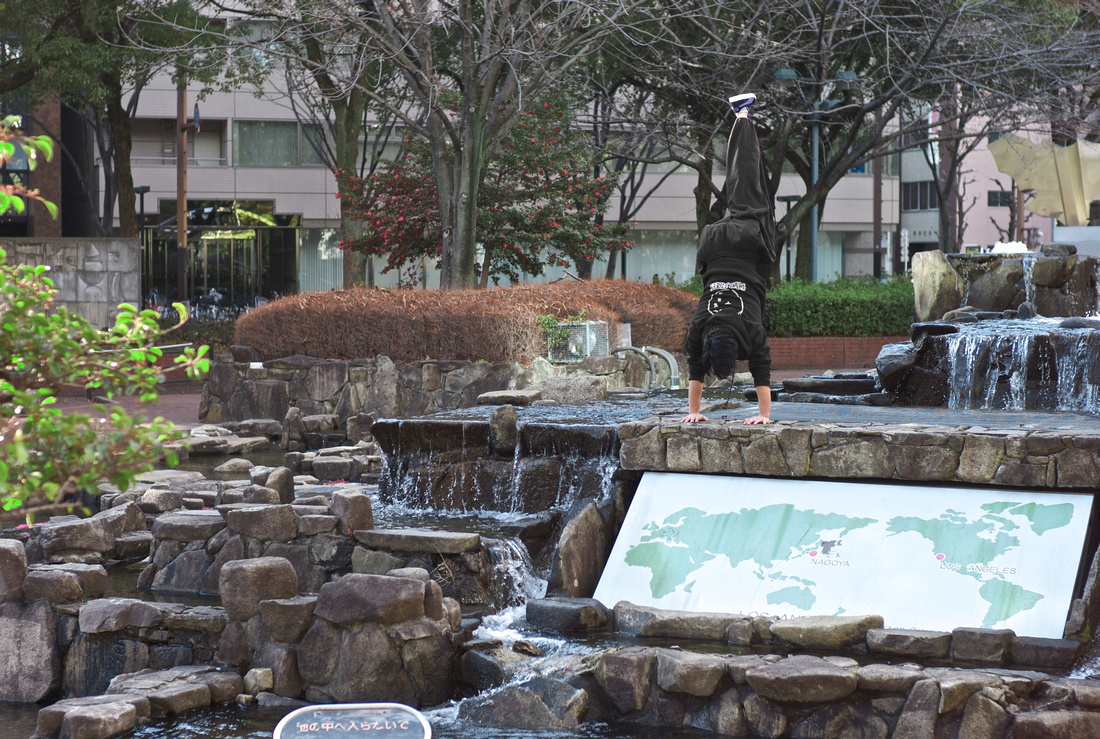

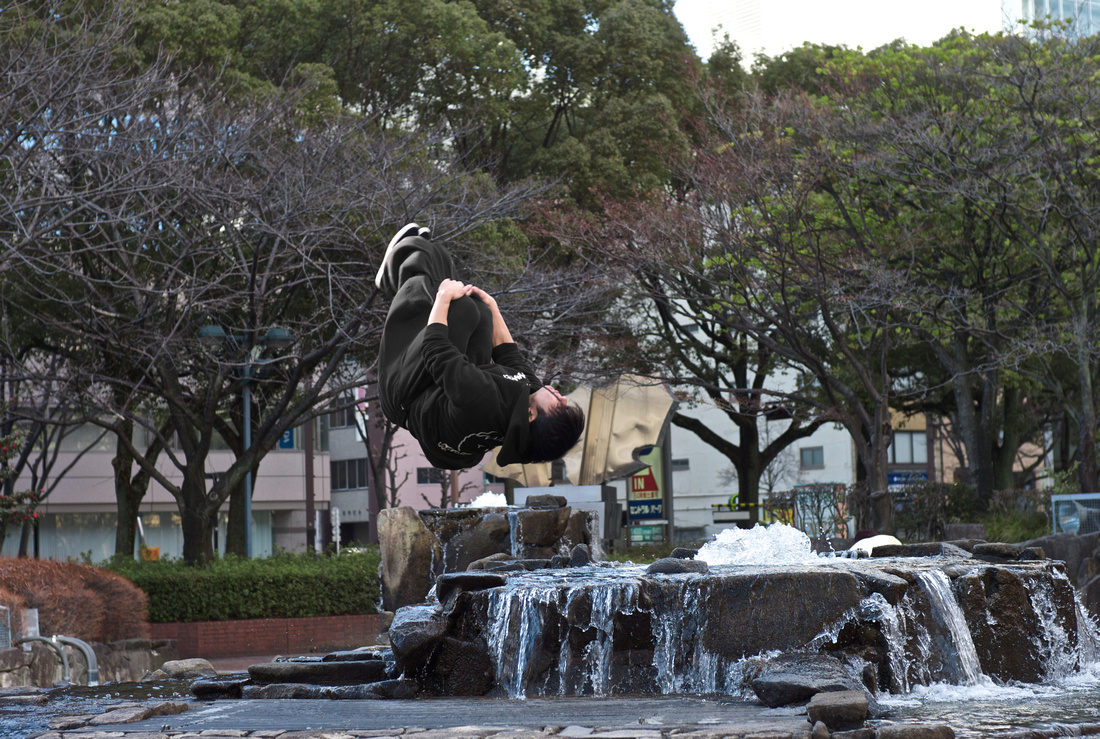

This gentleman is, I am told, particularly well known for his skill with flips. He did indeed seem to be very good at them.
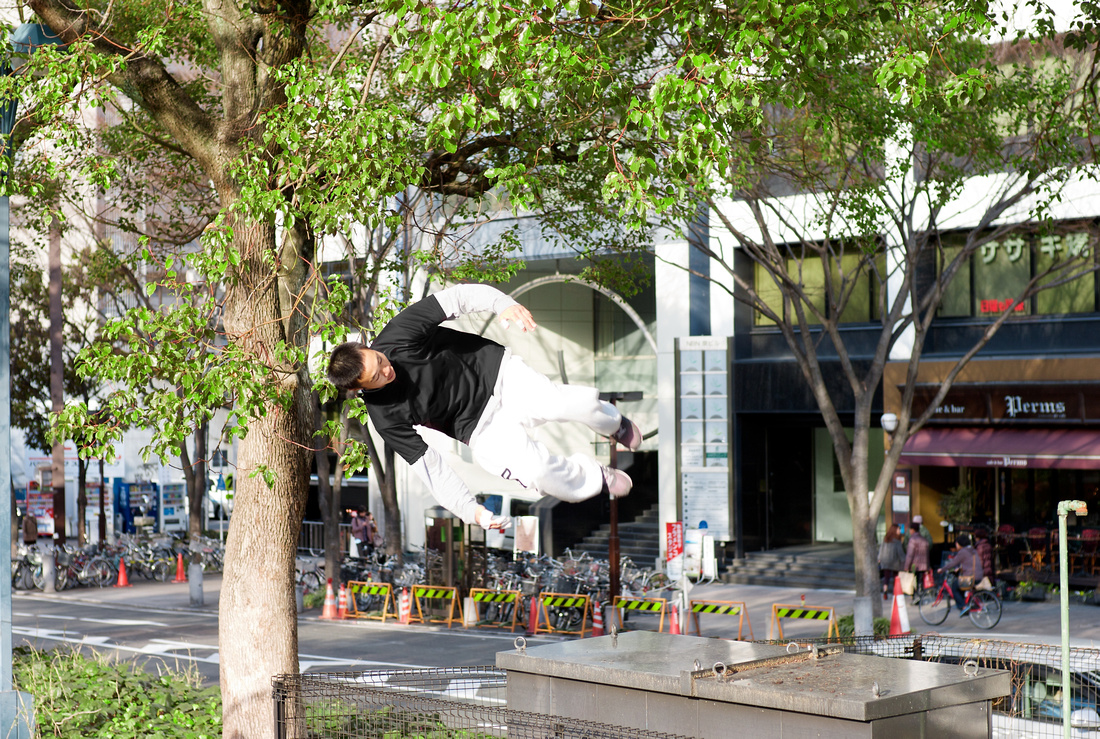

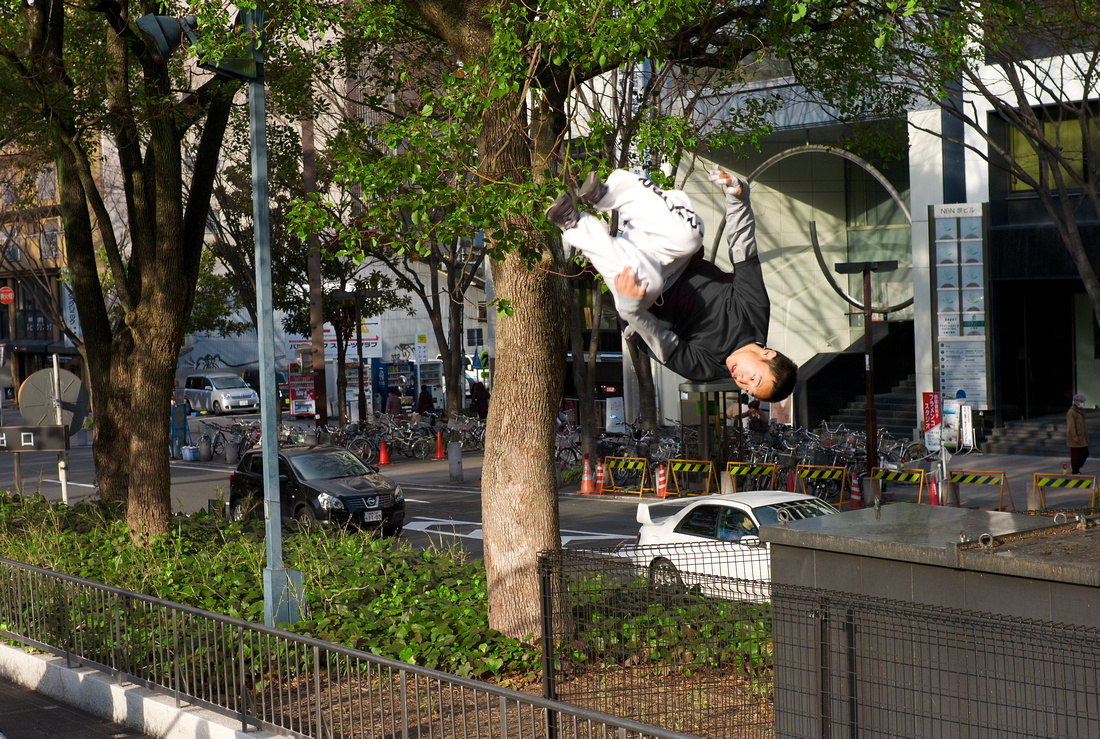

The woman on the left was just luck; I was so busy trying to nail the focus on the main subject that I didn't even notice she was there.
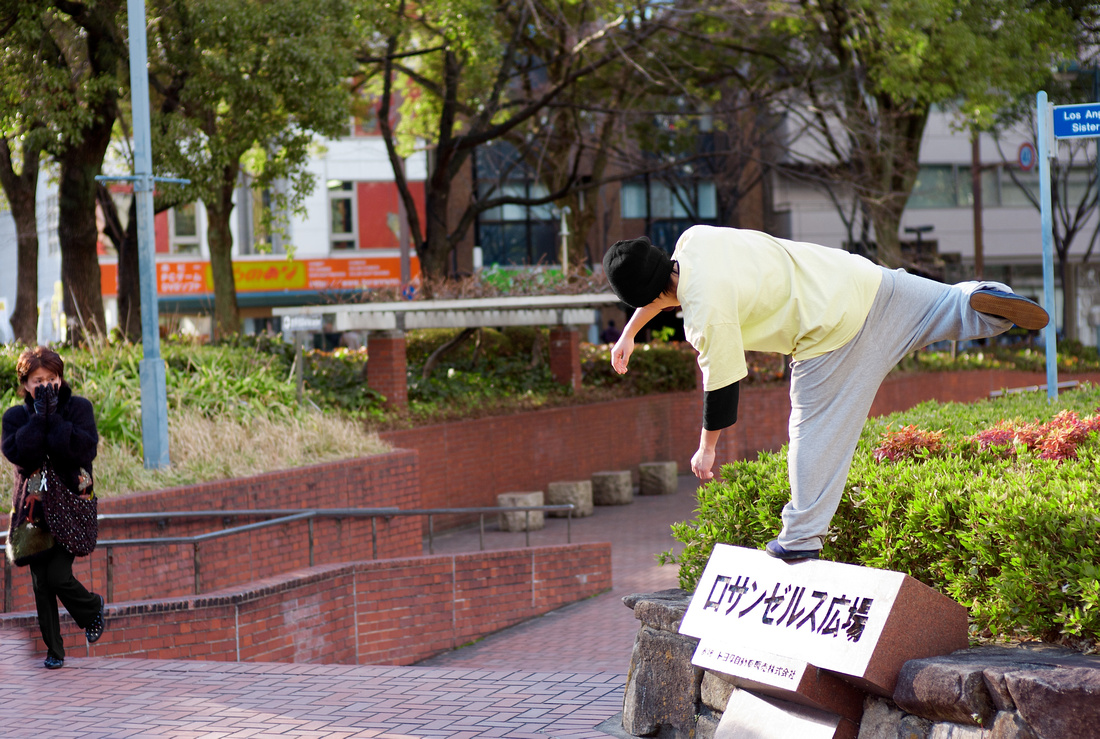

And this is what I mean when I say that shooting wide open (F1.5 on the Voigtlander) is a gamble. I shot five or six pictures wide open, and five of them were slightly off. The thing is that at 1.5, slightly off is not "slightly off", it's "ruined picture". You have to be absolutely dead on at that f-stop, but when you are, you get a really nice separation of subject and background and a fanstastic 3-dimensional effect:
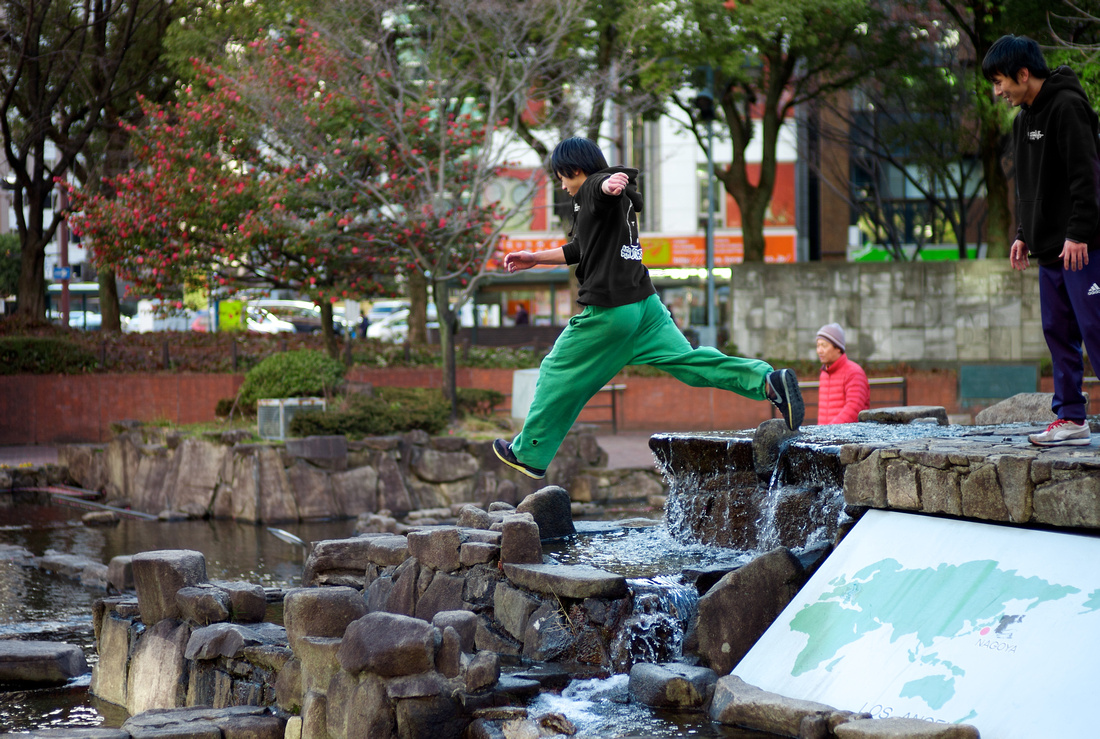

Last shot, the "eagle wallspin"
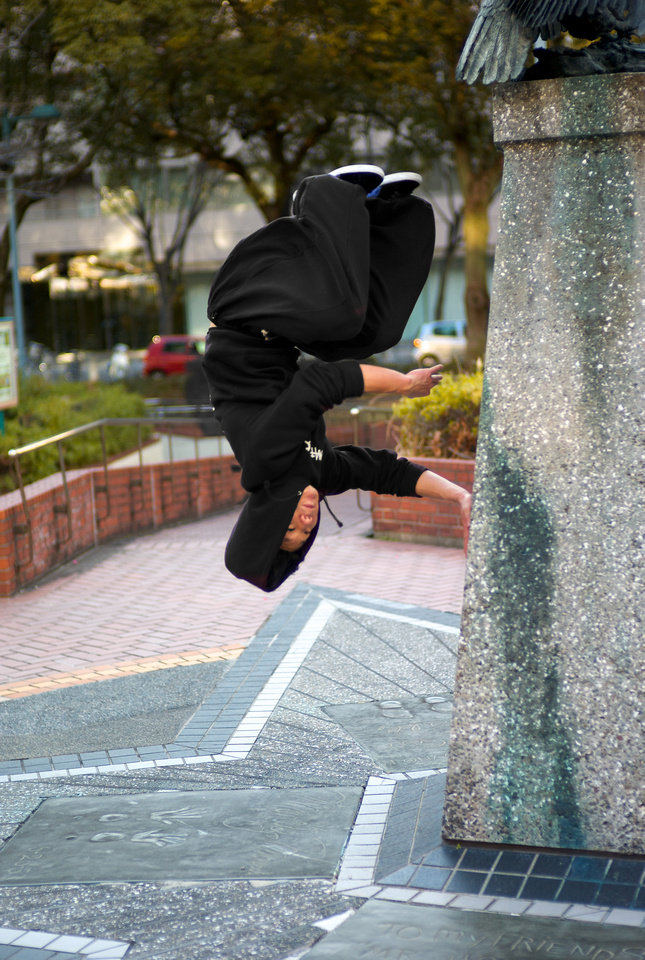

Thanks for looking and keep an eye out; the Merrill is sapping my willpower day by day :-)
Comments
This is a collection of posts. Some (most) have a particular theme, but some are just collections. I try to only include my best shots in here.
If you like what you see, please leave a message and I'll try to answer all comments.
Thank you!